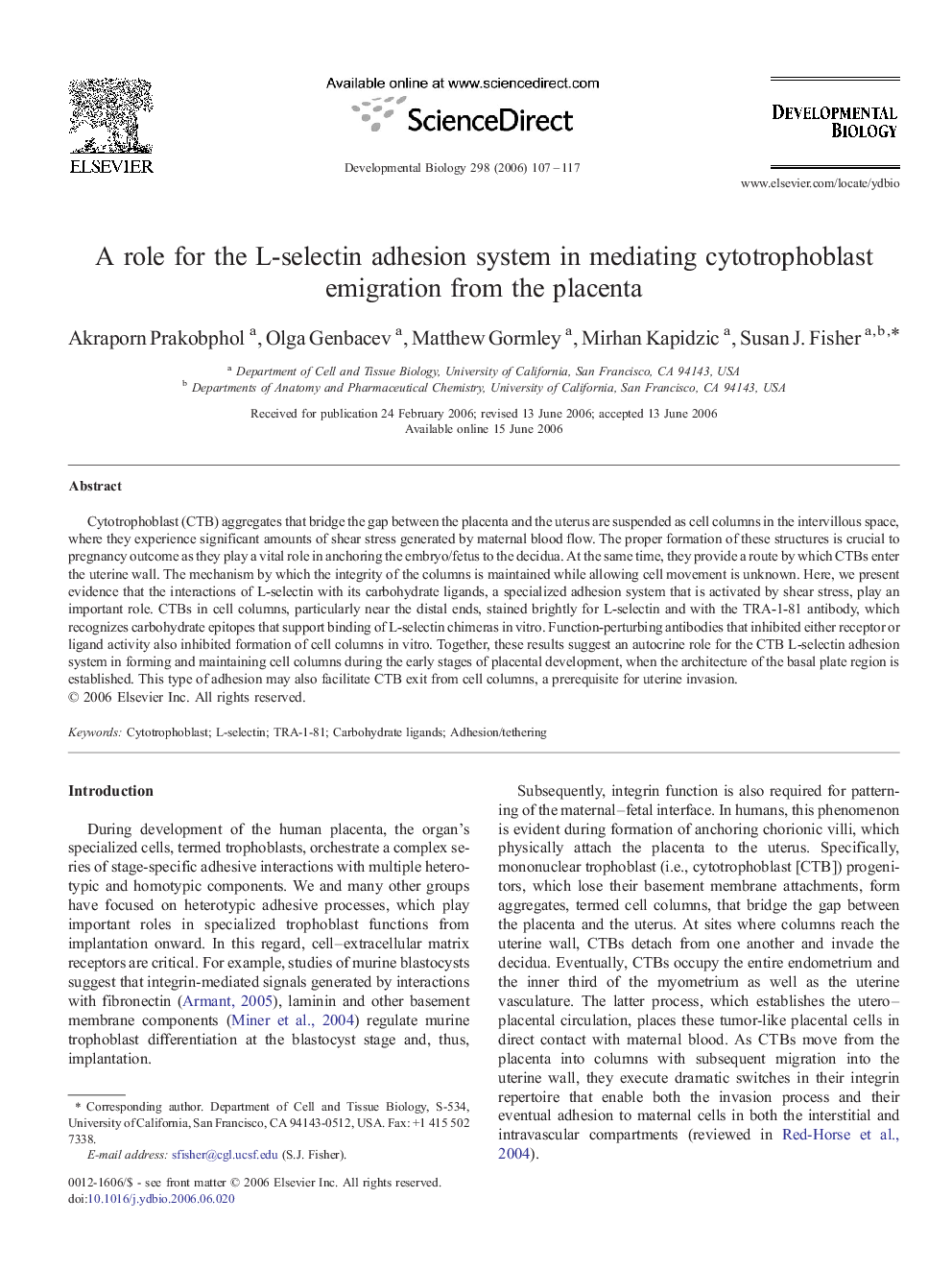| Article ID | Journal | Published Year | Pages | File Type |
|---|---|---|---|---|
| 2175684 | Developmental Biology | 2006 | 11 Pages |
Cytotrophoblast (CTB) aggregates that bridge the gap between the placenta and the uterus are suspended as cell columns in the intervillous space, where they experience significant amounts of shear stress generated by maternal blood flow. The proper formation of these structures is crucial to pregnancy outcome as they play a vital role in anchoring the embryo/fetus to the decidua. At the same time, they provide a route by which CTBs enter the uterine wall. The mechanism by which the integrity of the columns is maintained while allowing cell movement is unknown. Here, we present evidence that the interactions of L-selectin with its carbohydrate ligands, a specialized adhesion system that is activated by shear stress, play an important role. CTBs in cell columns, particularly near the distal ends, stained brightly for L-selectin and with the TRA-1-81 antibody, which recognizes carbohydrate epitopes that support binding of L-selectin chimeras in vitro. Function-perturbing antibodies that inhibited either receptor or ligand activity also inhibited formation of cell columns in vitro. Together, these results suggest an autocrine role for the CTB L-selectin adhesion system in forming and maintaining cell columns during the early stages of placental development, when the architecture of the basal plate region is established. This type of adhesion may also facilitate CTB exit from cell columns, a prerequisite for uterine invasion.
